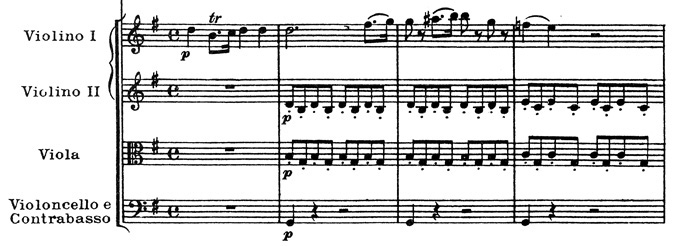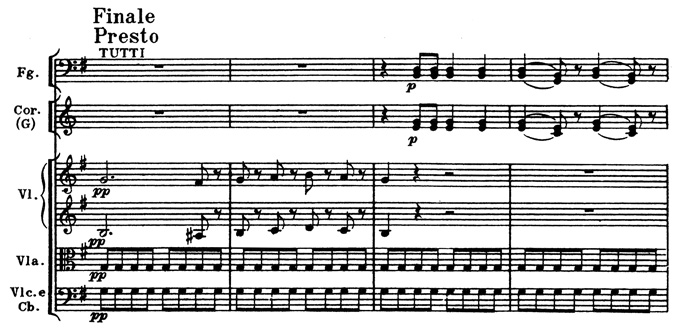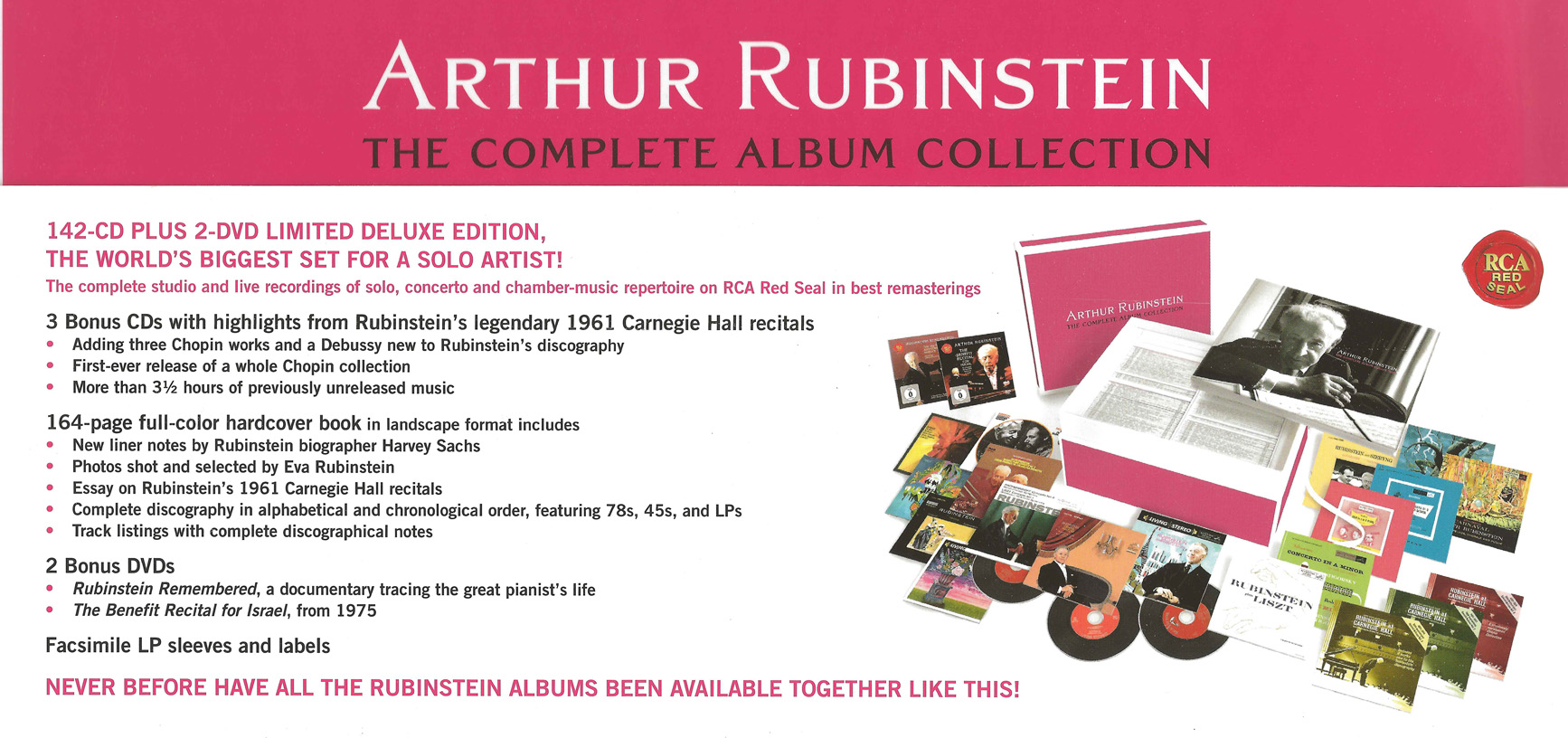Wolfgang Amadeus Mozart
Piano Concerto No.17 in G major, K.453
Media Review / Comparison
2014-05-04 — Original posting (on Blogger)
2014-07-16 — Addendum: reference to YouTube video
2014-11-11 — Re-posting as is (WordPress)
2016-07-20 — Brushed up for better readability
Table of Contents
Introduction / The Recordings
This post was initially triggered by Kristian Bezuidenhout‘s new recording below, partially already covered in my “Listening Diary 2014-04-08“; I have since received the “Arthur Rubinstein — The Complete Album Collection“ as a gift, and this included yet another “new” (to me) version (from 1962!). Here are the recordings that I’m going to discuss (sorted by the pianist’s last name):
- Géza Anda, Camerata Academica des Salzburger Mozarteums (1962)
- Vladimir Ashkenazy, Philharmonia Orchestra (1977)
- Daniel Barenboim, English Chamber Orchestra (1968)
- Kristian Bezuidenhout, Petra Müllejans, Freiburger Barockorchester (2012)
- Arthur Rubinstein, Alfred Wallenstein, RCA Victor Symphony Orchestra (1962)
- Andreas Staier, Concerto Köln (1995)
The Composition
The Piano Concerto No.17 in G major, K.453, by Wolfgang Amadeus Mozart (1756 – 1791) was written in a very productive period, in 1784. Mozart wrote this for one of his pupils, Babette von Ployer. Quite obviously (with the exception of the cadenzas, probably) he wrote this concerto “into the pupil’s hands”, i.e., he used figures and techniques in which Ms. von Ployer could excel — the result is a concerto that may not be as brilliant and technically demanding as some of the concerti that Mozart wrote just for himself. However, this of course does not imply that the interpretation should be at the level of a pupil’s abilities (we don’t know about Ms. von Ployer’s technical and musical skills on the fortepiano), as Mozart would certainly not hesitate to perform this concerto himself — very likely with extra “features” added on the spot!
The Movements
Formally, the composition consists of three movements:
I. Allegro (4/4)
The first movement (349 bars, 4/4) is an Allegro, starting with the following main theme:
Mozart wrote down two cadenzas (38 bars each) for this movement. With one exception (Barenboim), the soloists just play the first one, which is more tied to the movement’s themes, rather than mainly exposing scales, broken chords and virtuosic arpeggiandi like the second one.
II. Andante (3/4)
The second movement (135 bars, 3/4) is an Andante in C major, with the following main theme:
and again, Mozart writes down two cadenzas: one with 18 bars, more thematic (played by all soloists here), and a shorter, more virtuosic one (13 bars) that is less theme-related.
III. Allegretto (2/2) — Finale: Presto (2/2)
The last movement starts with an Allegretto part (170 bars, 2/2 / alla breve) with the following beginning:
The orchestra presents the theme with two repeated parts (AABB), the piano then takes up that theme in varied form, again repeating its two parts. The remainder of the Allegretto is a set of variations on the initial theme (without repetitions, though). The Allegretto ends with a fermata, and the final part of the movement (an additional 176 bars, still in 2/2) is annotated Finale, Presto:
There is no provision for a cadenza in this final movement.
Comparison Table
I have put together a little table, giving my (personal, relative) ratings (1 .. 5) and the metronome readings (approximate) for each movement & interpretation (blue indicating slower, green indicating faster performances):
For details see my comments below.
Comments on the Individual Recordings
Géza Anda
Mozart: The Piano Concertos
Géza Anda, Camerata Academica des Salzburger Mozarteums
DG 469510-2 (8 CDs, stereo); ℗ 1962 – 1971 / © 1995
booklet 37 pp., e/d/f

Recorded in 1962, Géza Anda (1921 – 1976) conducts the orchestra from the piano. This is part of a complete recording of all of Mozart’s piano concerti that I already had in my LP collection. Back in the LP days, this used to be my favorite recording (overall, at least). I now find that the quality of the orchestra is somewhat limited, and the sound of the recording (especially the piano) pretty dull.
Notes on the Movements
I. Allegro (4/4)
Duration: 12’21”; 1/4 = 128 (Allegro)
The sound is centered around the piano and features lots of reverberation, which doesn’t really help the recording. The amount of vibrato may be the same as with the conventional orchestras in this comparison — but this is a smaller ensemble, and so the vibrato is much more conspicuous, almost overblown: for me, almost painful to listen to, unfortunately! Also, the articulation in the orchestra is too much legato.
The piano on the other hand is fairly good (good tempo for a modern concert grand / conventional orchestra), with very good articulation and phrasing, maybe dynamically not as differentiated as Rubinstein. The one thing that stands out in the cadenza (Mozart’s first cadenza, as with most others) is the strong use of agogics / rubato (no objections against that, though).
II. Andante (3/4)
Duration: 10’39”; 1/4 = 50 (Andante)
The vibrato in this movement is pretty obnoxious. The tempo is better than with Barenboim, Rubinstein, and Ashkenazy, the solo often pretty dramatic, but there are some odd, strange tempo discontinuities (“agogics”? different takes? often, the solo appears to pull / push the tempo), the intonation in the orchestra is not always clean; the piano is too dominant.
III. Allegretto (2/2) — Finale: Presto (2/2)
Duration: 7’43”; 1/2 = 87 (Allegretto) — 1/2 = 150 (Finale: Presto)
In the Allegretto, the orchestra is a little too legato; also, the orchestra appears to play at the limits — at the given tempo, there are occasional coordination issues with the pianist — even more so in the Presto part where some passages appear superficial. In the Allegretto part, some more tempo differentiation (other than just for the minore variation) would have made sense.
| Recommendation: | No longer |
| Rating: | 2.7 (3 / 2 / 3) |
Vladimir Ashkenazy
Mozart: The Piano Concertos
Vladimir Ashkenazy, Philharmonia Orchestra
London Symphony Orchestra & others
London 443 727-2 (10 CDs, stereo); ℗ 1966 – 1988 / © 1970
booklet 54 pp., e/f/d/i

Recorded in 1977, Vladimir Ashkenazy (*1937) conducts the orchestra from the piano. Initially, when switching from LPs to CDs, I would look for versions that I did not already have on LP — and this was the one recording that I ran into at the time (at Tower Records in Mountain View, CA)…
Notes on the Movements
I. Allegro (4/4)
Duration: 12’16”; 1/4 = 132 (Allegro)
The orchestra is pretty massive, playing with vibrato (though with the size of this orchestra, the vibrato is mostly inconspicuous, except when one group — such as the first violins — are playing alone). In the piano part, Ashkenazy tries adding contours (compared to Barenboim), but remains conventional in general. Mozart explicitly notates legato with the Alberti basses in the left hand — Ashkenazy plays these distinctly staccato (pretty much throughout the movement): this draws way too much focus onto the accompaniment, distracting from the melody. I don’t think this is a good way to differentiate from other interpretations!
II. Andante (3/4)
Duration: 11’07”; 1/4 = 44 (Andante)
Better tempo than Barenboim and Rubinstein, but still hardly an Andante. At least, articulation and dynamics in the orchestra try to be differentiated, lighter. Some odd tempo changes (different takes? not a major concern, though). In the piano part, articulation and dynamics appear pretty (too) modest, not really “talking” / differentiated. I don’t think the basic mood in this movement ought to be mesto.
III. Allegretto (2/2) — Finale: Presto (2/2)
Duration: 8’25”; 1/2 = 76 (Allegretto) — 1/2 = 152 (Finale: Presto)
Compared to Barenboim, the Allegretto is less heavy and massive, but also a too tamed, too modest; the piano is light, adds no extras, other than a mini-cadenza at the end of the Allegretto. Also the Presto is too modest, not witty enough, and precision in the orchestra is limited.
| Recommendation: | No |
| Rating: | 2.3 (2 / 3 / 2) |
Daniel Barenboim
Mozart: The Complete Piano Concertos
Daniel Barenboim, English Chamber Orchestra
EMI classics 5 72930 2 (10 CDs, stereo); ℗ 1967 – 1989 / © 1998
booklet 31 pp., e/d/f

Recorded in 1968, Daniel Barenboim (*1942) conducts the orchestra from the piano. This was one of the complete recordings of the Mozart piano concerti that I had on LP (besides Géza Anda and Ingrid Haebler).
Notes on the Movements
I. Allegro (4/4)
Duration: 11’09”; 1/4 = 140 (Allegro)
The orchestra sounds bulky, uses vibrato throughout, too much legato; also, the ornaments are often superficial, lacking articulation. The piano is equally superficial, possibly caused by the movement being too fast for a conventional setting & a modern concert grand; Barenboim is even sloppy in his tempo control. He is the only pianist here not just playing Mozart’s first cadenza — he starts with 7 bars from #2, then switches to cadenza #1 (after bar 6), and ends adding material of his own (not quite in style) in lieu of Mozart’s final 4-bar lead-back.
II. Andante (3/4)
Duration: 11’38”; 1/4 = 41 (Andante)
Very, too slow, rather Adagio than Andante, and yet they even add ritardandi — on the other hand, the tempo has a tendency to accelerate, especially in the solo part, i.e., the movement is so slow that it is hard to keep the slow pace. And the heavy vibrato in the flute etc. — and the final bars slow down to a lento. From a sound point-of-view, the piano is far too dominant.
III. Allegretto (2/2) — Finale: Presto (2/2)
Duration: 7’50”; 1/2 = 76 (Allegretto) — 1/2 = 172 (Finale: Presto)
In the Allegretto, the orchestra is clumsy, heavy, massive. Worse: a tendency (both solo and orchestra) to use crescendo in many ascending figures (higher notes are more audible anyway, so this is not necessary!) — sounds pretty odd / trivial, if not boring after a while. Already in the first part, the solo is sometimes a bit superficial — the Presto is clearly too fast, the superficialities are obvious both in the solo part as well as in the orchestra.
| Recommendation: | No, really not. |
| Rating: | 1.3 (1 / 2 / 1) |
Kristian Bezuidenhout
Mozart: Piano concertos K.453 & 482; Rondo in A, K.386
Kristian Bezuidenhout, Petra Müllejans, Freiburger Barockorchester
harmonia mundi HMC 902147 (CD, stereo); ℗ 2012
booklet 32 pp., f/e/d

On the Artists
Recorded in 2012, a very nice example for the fruitful cooperation between Kristian Bezuidenhout (*1979) and the Freiburger Barockorchester under Petra Müllejans! Bezuidenhout plays the Mozart concerto a fortepiano by Paul McNulty, Divisov CZ, 2009, after Anton Walter & Sohn, Vienna, 1805.
Obviously, the closest contender to the recording with Andreas Staier — though recorded 17 years after that, featuring a pretty different sound: the sound is more transparent, more three-dimensional. The orchestra appears smaller, even though the number of string instruments is almost identical (slightly bigger even, with 5 + 5 + 4 + 3 + 2) — but that impression may be caused by the fact that for the accompanying section, the orchestra often appears to be reduced to a concertino, such that the solo is not covered.
Bezuidenhout does of course also play continuo — in a much richer way than Staier (i.e., with more fantasy, not just compact chords). Also, the recording makes it obvious that the two violin voices were placed on either side, giving rise to some nice dialogs, and the sound of the wind instruments is marvelous and rich! Also, the fortepiano sound is more prominent and more detailed here (hard to say whether that’s the instrument, the soloist or the recording technique — probably a combination of these). The orchestra plays with virtually no vibrato, which not only is more authentic, but also helps the clarity and transparency, along with the lighter articulation.
Notes on the Movements
I. Allegro (4/4)
Duration: 11’31”; 1/4 = 140 (Allegro)
Excellent tempo, excellent coordination between soloist and orchestra, phrasing, articulation and dynamics more detailed and careful than with Staier. The latter is very alert in general — yet, Bezuidenhout appears more vivid — excellent in all aspects, I would not know where and what to improve! Needless to say: the sound of the Walter replica fortepiano is marvelous, singing, so much richer than a modern concert grand!
II. Andante (3/4)
Duration: 9’52”; 1/4 = 53 (Andante)
Even better than Staier! The orchestra is vastly more differentiated, richer in agogics, dynamics, expression, articulation and phrasing, the continuo part more elaborate. Bezuidenhout expands the sound spectrum by using the moderator for the p / pp (and presumably the continuo) parts, and he adds even more ornamentation than Staier — even better: the orchestra (the flute in particular) also adds ornaments (I like that, even though some may view this as unusual / extravagant). This recording uses the fastest tempo — but is never hurried, still a true, proper Andante. And from the recording technique alone, the piano sound is much more detailed, differentiated than in Staier’s recording. Simply excellent!
III. Allegretto (2/2) — Finale: Presto (2/2)
Duration: 7’47”; 1/2 = 88 (Allegretto) — 1/2 = 160 (Finale: Presto)
Compared to Staier’s, this interpretation has more life, temperament, humor, fantasy, and the recording is more transparent, more balanced overall. There is much more dynamic and rhythmic differentiation, both in the solo as well as in the orchestra, and Bezuidenhout adds many more ornaments. Occasionally, his ornaments may sound slightly questionable in style — e.g., those around bar 310, but on the other hand, they sound spontaneous — and maybe they really were spontaneous? After all, ornaments that sound like carefully planned and thought out are often not the best idea! Nice: the minore variation is played with moderator — and there is a little cadenza at the end of the Allegretto — excellent, once more!
| Recommendation: | YES!! An absolute must, I think! |
| Rating: | 5.0 (5 / 5 / 5) |
Arthur Rubinstein Collection, CD #86
Arthur Rubinstein — The Complete Album Collection
CD #86: Mozart: Piano concerto K.453; Schubert: Impromptus D.899 Nos. 3 & 4
Arthur Rubinstein, Alfred Wallenstein, RCA Victor Symphony Orchestra
SONY Classical 88691936912 (142 CDs / 2 DVDs, mono / stereo); ℗ / © 2011
Documentation 162 pp., specific information on K.453: backside of CD sleeve

Arthur Rubinstein (1887 – 1982) recorded this on 1962-03-31 (on a single day) at the Manhattan Center in New York, USA.
Notes on the Movements
I. Allegro (4/4)
Duration: 12’25”; 1/4 = 132 (Allegro)
With its legato playing and the mostly rather broad articulation (especially in the introduction), the orchestra feels like the oldest, most conventional in this comparison. However, then comes Rubinstein — and his playing is very well balanced and really differentiated, expressive, with very careful articulation and dynamics. The tempo is the same as with Ashkenazy (at the lower edge for an Allegro), but I really prefer this over Barenboim and Ashkenazy! The recording technique is somewhat limited — as to be expected with an early stereo recording: the left appears reserved for the violins, the piano occupies the center, the right side the celli & basses.
II. Andante (3/4)
Duration: 11’43”; 1/4 = 39 (Andante)
Very slow, static base pace (slower than Barenboim), with some odd accelerandi, and with lots of heavy vibrato (e.g., in the flute). Oddly, the minore parts (e.g., bars 35-39, in particular bars 69ff. and 95ff.) are taken substantially faster (1/4 = 54, presumably to make the music more dramatic), with a gradual return to the original, slow maggiore tempo; none of these tempo changes are justified from the score, and they feel rather odd. Rubinstein’s playing is dynamic, differentiated and careful in the articulation — but the overall impression remains a very mixed one.
III. Allegretto (2/2) — Finale: Presto (2/2)
Duration: 7’58”; 1/2 = 86 (Allegretto) — 1/2 = 146 (Finale: Presto)
Very nice — the best of the “conventional” interpretations here: witty, with light, accurate articulation both in the orchestra as in the piano; decent, subtle tempo concept for the variations. No extras on top of the notation (as expected), but very well played: the orchestra is substantially better than the one in Anda’s, Barenboim’s, or Ashkenazy’s recordings — it appears to pay to have a separate conductor taking care of the orchestra!
| Recommendation: | Conventional, but for me a positive surprise: clearly, the best of the conventional interpretations in the fast movements! |
| Rating: | 2.7 (3 / 2 / 3) |
Andreas Staier
Mozart: Piano concertos K.271 & 453
Andreas Staier, Concerto Köln
Teldec 4509-98412-2 (CD, stereo); ℗ / © 1995
booklet 36 pp., e/d/f

Recorded in 1995, Andreas Staier (*1955) conducts the orchestra from the piano. He plays a fortepiano by Monika May, Marburg, 1986, after Anton Walter, Vienna, 1795. Strength of the string section: 5 + 5 + 3 + 2 + 2.
Notes on the Movements
I. Allegro (4/4)
Duration: 11’47”; 1/4 = 144 (Allegro)
The orchestra sounds bigger than it (probably) is, the sound is relatively compact, overall. Staier also uses the fortepiano as continuo instrument, though mostly this is done rather inconspicuously, except for some f chords around the cadenza. In my opinion, it would not hurt if the continuo accompaniment would be more prominent (and not just limited to chords indicating he basic beat). The tempo is the fastest in this comparison, but very well mastered by soloist and orchestra. Staier adds refreshing, additional ornaments — excellent playing, in general, I like the recording!
II. Andante (3/4)
Duration: 10’27”; 1/4 = 50 (Andante)
When coming from the traditional interpretations, this appears like in a different world! the tempo is far better (really Andante), the articulation light, the continuo playing very (too?) discreet, hardly audible. Excellent phrasing & articulation; some nice, added ornamentation in the solo part — not the loaded drama as in the traditional interpretations. The minore parts (e.g., bars 69ff.) are not nearly as dramatic as others, but (initially, at least) sad, introverted, though later it turns moody, more dramatic. Very nice!
III. Allegretto (2/2) — Finale: Presto (2/2)
Duration: 7’23”; 1/2 = 84 (Allegretto) — 1/2 = 164 (Finale: Presto)
The biggest reservation about this movement: the bass is relatively strong, often somewhat dull — but apart from that, the movement is extremely virtuosic, both in the fortepiano as well as in the orchestra (the Presto is operating at the limit for the orchestra, though, and some passages are close to being rushed). The continuo playing (fortepiano) is mostly colla parte. Overall, a very virtuosic, vital and entertaining performance (also thanks to Staier’s added ornaments), with energy and drive.
| Recommendation: | Sure, an excellent recording — though in my opinion the recording with Bezuidenhout beats this hands down! |
| Rating: | 4.0 (4 / 4 / 4) |
Addendum 1
I’m using the Eulenburg pocket score to follow this concerto while listening. —Find pocket score on amazon.com (#ad) —
Addendum 2
On YouTube, there was a nice video from a concert performance in the Schlosstheater Schwetzingen, featuring the concerto K.453 with Kristian Bezuidenhout and Petra Müllejans directing the Freiburger Barockorchester, preceded by the Overture to “Der Schauspieldirektor” (K.486), and followed by the ballet music from “Idomeneo” (K.366). The concerto performance is pretty much what is discussed above, except that it’s live, and on the stage of that small theater, the orchestra was not arranged the way it is on the above recording. That video is no longer available.




















